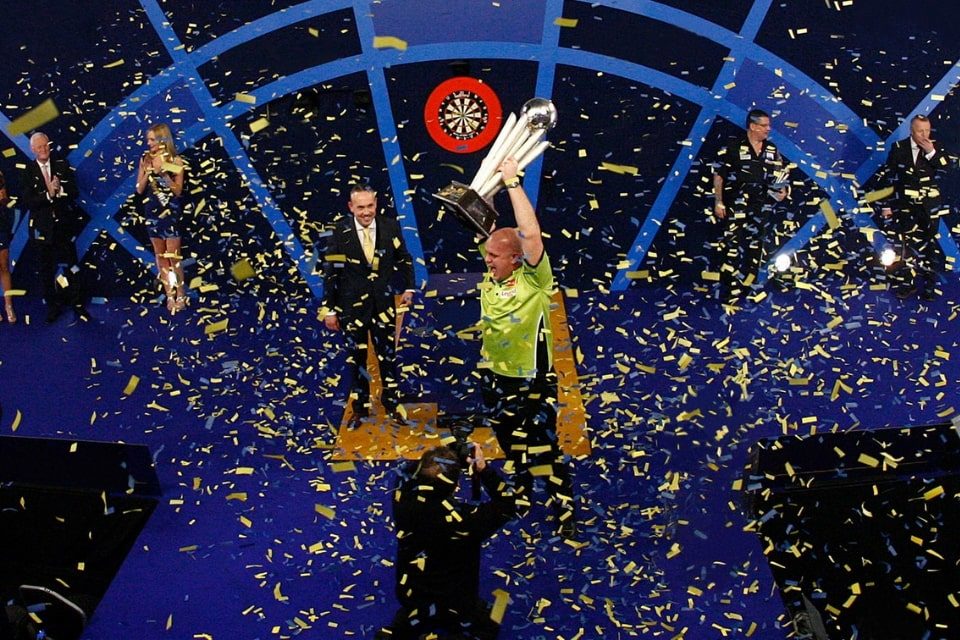Professional darts players obviously have the skills they need to be able to master this game. However, the darts they use also have to perform well in order to allow them to leverage their talent. If you’ve ever wondered what type of darts pro darters use, you’re about to sort out your dilemma. Read on and discover what type of darts professional players prefer and why.
One of the most important features pro players look for when they get a new set of darts is the weight. This factor has a tremendous impact on the overall performance of a darter. After a certain period of time, many professional players find it hard to shift to a different dart weight as they’ve gotten used to a particular dart standard, one that fits their throwing style the best.
Due to their different weight, darts are easier or more difficult to handle; for beginners, it’s usually easier to play with heavier darts because those give you more control over your flight trajectory and are easier to hold. Nonetheless, for professional players who have been training a lot and had the chance to experiment with different types of darts, lighter darts are normally the preferred choice.
Being smaller, these darts can easily be grouped together in the dartboard, something pro players can achieve with no problems to boost their score. Moreover, pro darters also find it easy to control light darts as they’ve gradually evolved from heavier models.
If you’re curious to find out the darts weight pro players prefer, here is a shortlist of some of the most famous darters and their choices:
- Stephen Bunting, 2-times BDO world champion uses 12 grams darts
- ‘Mighty’ Michael Van Gerwen, 3-times PDC world champion and the world’s second-ranked player uses 23 grams darts
- Daryl (Super Chin) Gurney, PDC professional player uses 22 grams darts
- Peter (Snakebite) Wright, winner of the 2020 World Darts Championship and currently ranked the world’s third darter plays with 22 and 24 grams darts
- Mensur (The Gentle) Suljovic, PDC professional player competes with darts that weigh 23 grams
Material is also extremely important when it comes to the performance darts can deliver. Cheaper materials such as plastic are not a choice for professionals who prefer and require sturdy darts that can offer a consistent flight trajectory and excellent grip points.
For this reason, the majority of professional darters play with tungsten darts. Due to its properties and increased resistance, this is the king in terms of darts materials, and many players, including Michael Van Gerwen, Rob (Voltage) Cross, Daryl (Super Chin) Gurney, Peter (Snakebite) Wright typically use 90% tungsten steel tip darts.
In terms of flights’ shape, players’ preferences differ. For example, ‘Mighty’ Michael Van Gerwen uses standard flights that are quite common among pro and casual players alike. These flights are larger and enhance the dart’s movement through the air. Other professional players such as Kevin Painter use kite flights that maximize the dart’s speed.
Finally, it’s also worth mentioning that some top players receive their very own, custom-made darts sets from manufacturers. Those darts are specially crafted to fit their grip and style and although they are not available to the wider public, you can follow this example and always try to play with the type of darts that suit you best. At IgnatGames, we can offer you a comprehensive array of darts sets of different weights that can and will help you boost your technique.







I am in NO WAY a pro-level darter, but I can compete well-enough in a bar setting. I totally agree with the premise of this article, namely that the darts do matter in how one is able to control them. One thing I don’t see mentioned anywhere are the old-fashioned wooden feather darts. I personally normally play with some 24g brass darts that happen to have a great balance point and excellent grip. They have standard flights to stabilize my often errant tosses. But one set of darts I have won with a LOT is a set of FAT wooden feather darts that are super light (never weighed them). The ideal way to throw them is to literally “float” them to the board. Their sheer fatness (girth?) virtually eliminates the possibility of hitting, say, two or three trips (or “trebles” in the parlance), but they throw great and I’ve been very successful in winning games with them. The best part is when the opponent with the super expensive tungsten dart set sees me pull out some old wooden darts and then I proceed to win with them. Any other darters familiar with “woodies?” I personally love playing with them, and the best part is pulling out two sets and playing another dart player with the exact same type of dart (wooden with real feathers), meaning there is no advantage either way. At that point, it’s all about skill.
I was led to believe that those old woody darts you speak of were for a longer area game? Instead of 9ft like 12ft game?
Hi Don.
Indeed, the wooden darts are used for what is Called “American” darts. The ABDA (American Baseball Darts Association) sets the distance at 7 ft 3 in (2.21 m) from the front of the board. This is 107.4 inches (2.73 m) from the centre of the cork to the throw line, as opposed to the classic English brass darts games that use the standard distance: at 7 ft 3 in (2.21 m) from the back of the dartboard. This would result in a distance of 106.4 inches (2.70 m) from the center of the cork to the throw line